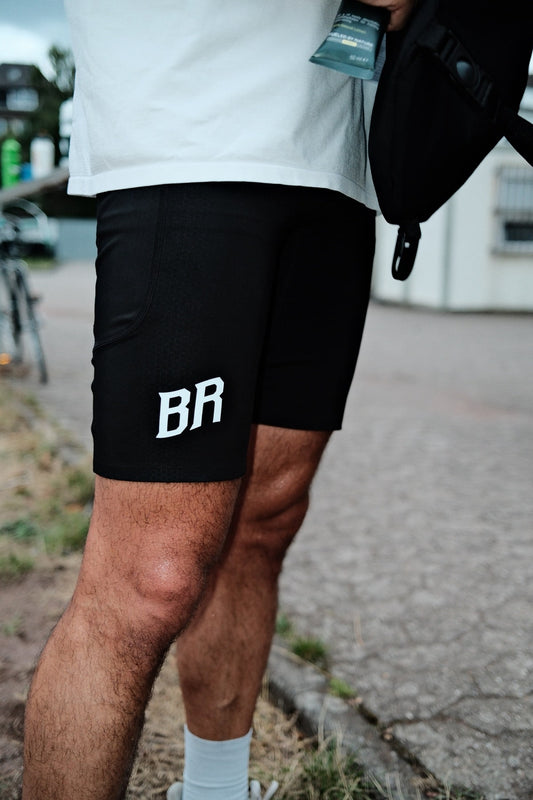Lack of exercise is a widespread illness that also affects the joints, among other things. If the joints are not moved sufficiently, this can lead to, among other things, osteoarthritis. Exercise training in the form of running training or strength training, for example, can help. Running and strength athletes are often recommended a variety of mobility exercises that take up a lot of time and take away valuable time for actual training, regeneration or other important things.
But how much mobility training is really necessary? To put it even more succinctly: How little mobility training can you do and still achieve the best results?
The answer is often surprising: less than you think, as long as you follow the right strategy . That's what this post is about, among other things. First of all, let's clarify what mobility is and whether it really lives up to its reputation of protecting against injuries and pain.
What is and does mobility training provide?
Your ability to perform certain exercises and movements safely and correctly depends on your mobility. Optimal mobility maximizes the effectiveness of your training. If there is a gap between your mobility requirements and your abilities, you need more mobility. But don't worry, you can improve your mobility through systematic mobility training. However, you should be careful not to invest an unnecessary amount of time in mobility training, as it may either be unnecessary or ineffective. My approach is to do as little mobility training as possible and as much as necessary . In this post you will learn how you can achieve this goal.
Before we start, I would like to clarify and define the term mobility. Mobility refers to the amplitude that a joint can achieve under its own muscle strength. It describes the range of all angles into which you can bring a specific joint without external support. Mobility is also referred to as “active mobility” and is distinguished from flexibility (or “passive mobility”). Flexibility refers to the amplitude a joint can achieve when supported externally.
When it comes to flexibility training, most people think of stretching exercises, which can undoubtedly help. But what many people don't know: greater mobility arises primarily through adjustments in the nervous system.
Contrary to what is often claimed, stretching exercises do not significantly lengthen muscles and other tissues. Instead, the body gets used to the pain of stretching and becomes more tolerant of deeper stretches.
This means that stretching exercises do not significantly change the tissue, but simply allow it to stretch further. This finding is crucial when considering the connection between mobility and pain.
My experience is that mobility training can be very time-consuming. It is all the more important to clarify whether it is even worth investing time and effort in mobility training, for example to avoid injuries or relieve pain?
Mobility Training: Protection against injuries and pain?
If you have pain when moving, you often hear advice to help yourself through mobility training with foam rollers and similar aids. You should press on certain areas and stretch or strengthen muscles. “Shortened” or stuck fascia is often cited as the cause of pain. But this model
suggests that loss of mobility is accompanied by structural changes in the tissue, which then leads to pain.
However, a lack of mobility in healthy people can usually be caused by two factors: an unusual posture and joint position and the nervous system, which does not release the full length of the muscle. In addition, fascia is very resilient and cannot be structurally changed even with the most aggressive fascia roller. A study with fascia researcher Robert Schleip has confirmed this.
But why does the fascia roller still lead to short-term flexibility? Researchers believe this is due to a change in pain perception and not a change in the tissue.
Mobility training is often not the ultimate solution to pain caused by shortening and adhesions. However, it can help indirectly by providing additional options to relieve pressure on a painful joint.
Mobility isn't a miracle cure, but it expands your options and prevents you from ending up in a training dead end. It allows you to avoid sensitive areas or apply pressure in a more comfortable way to keep up with your workout.
Use mobility training more effectively
Before you start training for more flexibility, you should make sure that two limiting factors can be ruled out:
1) Technique: Are you performing the exercise correctly?
2) Bone structure: Does your individual anatomy limit your mobility?
It is obvious that mobility training cannot solve the root cause in both cases. An example of this is the deep squat, where the position is crucial and varies from person to person. However, blanket recommendations such as “feet hip-width and parallel” are often given, which are simply wrong. This leads to many people adopting a suboptimal position, which blocks movement due to their bony structures and therefore cannot achieve the necessary depth. Generally, a blockage is always felt on the side of the joint that is closing. So when you squat you would feel it in the front hip joint. In this case, mobility training alone cannot help. Instead, it is necessary to adapt the technology.
When doing squats, you can reduce pressure on the front of the body and instead feel a stretch on the back of the hip joint. It is therefore important to adapt the squats individually. Even if you have good mobility, unfavorable leverage can affect the execution of the exercise. Find the optimal technique for your individual anatomy. Finding the ideal design is often enough to achieve the desired result. Only when all options have been exhausted should you devote yourself to mobility training. If you still have difficulty performing a certain exercise, you can start with a simple mobility training method. Perform the movement as best you can, making sure you create some sort of dynamic stretch. In this way, you train your nervous system and get used to new joint angles, which leads to improved mobility and technique. Always keep in mind that every body is individual and there is no universal solution.
There is no such thing as bad posture - that may sound surprising, but it is my experience . The posture your body is currently in is the one it has adapted to in order to work efficiently. Rather, there is inadequate preparation for training. However, if you start slowly and carefully and you
If you take enough time to increase the load and volume, you can cope with training stimuli even if your technique is not perfect.
Through the right amount of stress combined with active mobility, you strengthen your entire musculoskeletal system, including muscles, connective tissue, bones, tendons, ligaments and cartilage. As long as you feel good during and after training and are making progress, nothing is off limits. If you choose exercises that require a wide range of motion in the joints where you need more mobility, you can even save time on mobility training and achieve the greatest effect. Mobility training and running and strength training are combined in one.
Author: Alexander Schröder
Personal trainer/coach, competitive middle and long distance running athlete, founder of Movement Skills , teacher of sports & mathematics

“Freedom of movement and performance through movement skills”
Photos : Azib Hamidi





